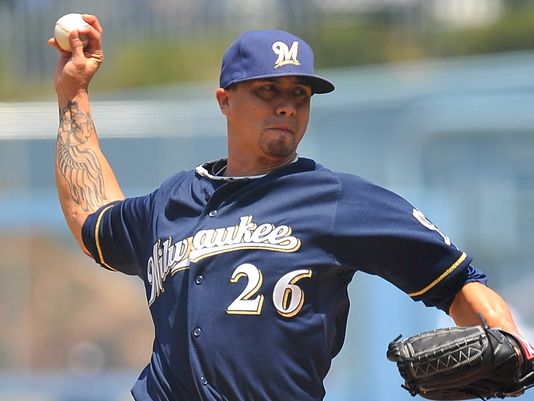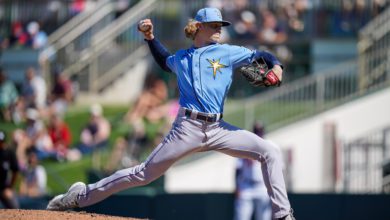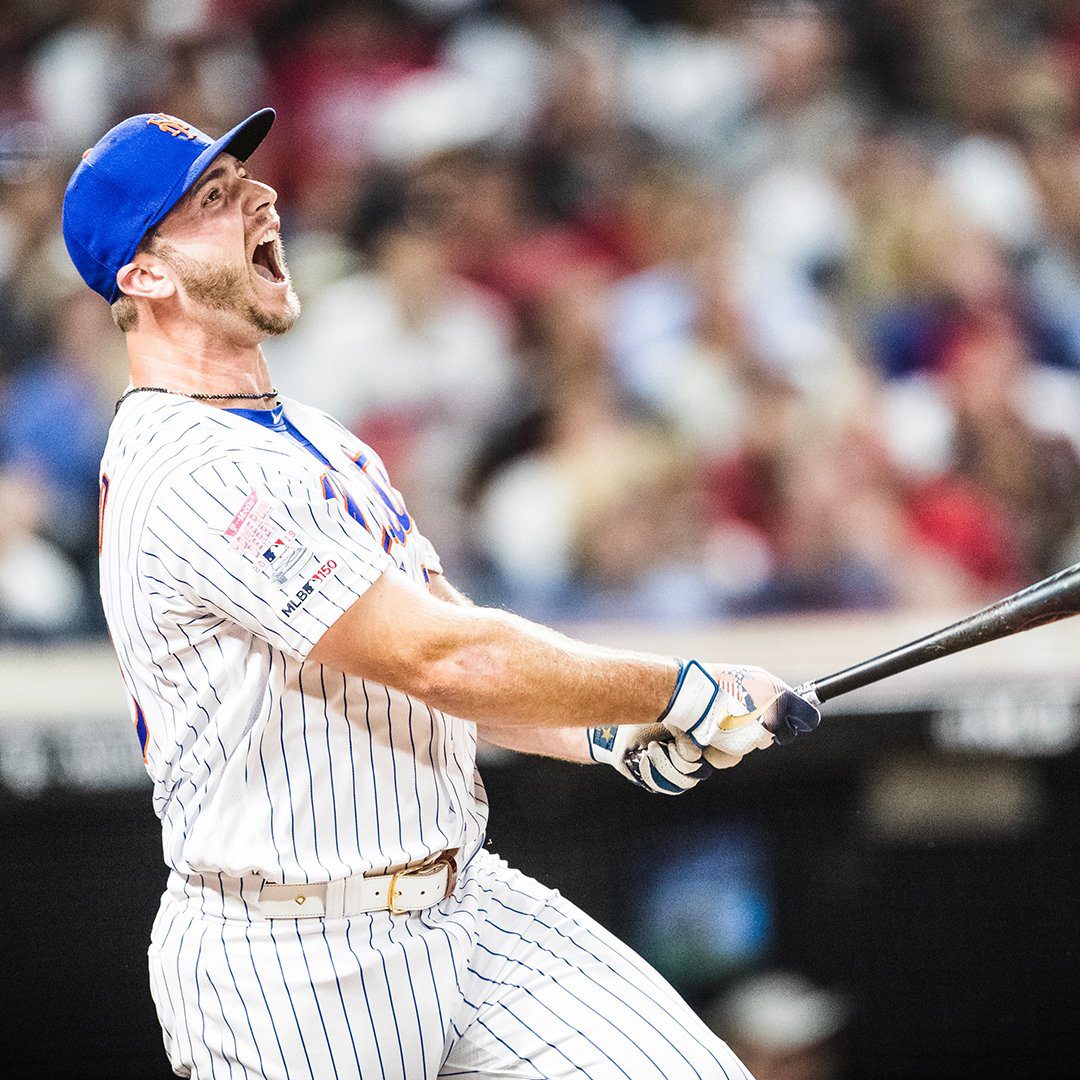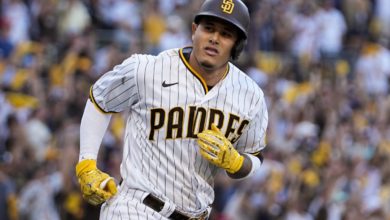

About once a week, I patrol ESPNs most added/dropped page to gauge which players have fallen in and out of favor by the fantasy community. Most of the time, the players belong in their respective lists, but on occasion, there are players added who shouldn’t be and players who are dropped who shouldn’t be. There are two players in the top 10 of the added and dropped lists that fit this criterion: Jeff Locke and Kyle Lohse. Which list do you think Kyle Lohse was on? I was surprised to see Lohse’s ownership percentage has decreased 22.6 percentage points while Jeff Locke’s ownership percentage has increased nearly 29 percentage points. In fact, Locke is owned in more leagues than Lohse.
In this exercise I’ll look at the factors I use to evaluate the potential viability of pitchers from a fantasy perspective. Here is a quick definition of each factor:
- History/Track Record: Does the pitcher have a track record of success? What is his statistical track record?
- Miss Bats: Does the pitcher miss a lot of bats? The statistical representation of this is strikeout rate, but it is not the be-all, end-all.
- Command: Does the pitcher throw a lot of quality strikes? Does he induce a lot of weak contact? The statistical representation of this is walk rate, but it is not the be-all, end-all.
- Fastball Velocity: I love velocity because it allows pitchers more wiggle room to make mistake pitches.
- Stuff: The quality of the pitches in the pitcher’s arsenal.
- Defense: Will the defense consistently generate outs?
- Offense: Will the offense score runs consistently to allow the pitcher an opportunity to earn wins?
- Bullpen: How good is the bullpen? Will the bullpen hold leads and close out games without blowing the lead?
- Ballpark: How much does the ballpark effect the outcomes a pitcher has? Extreme examples are the pitcher friendly confines of PETCO Park and hitter friendly parks such as Coors Field.
- Strength of Division: The quality of the opponents of each team in the division.
- Best Fantasy Option: This is based from today to the end of the season.
Below you’ll find my fantasy report card and player capsules of both players. It is important to note the factors are not weighted equally as some factors carry more weight than others. I ordered the factors by importance in the report card.1 For example, a pitcher that is able to miss bats is more important than his team’s defense. Other than past performance the two most important factors are strikeout and walk rates. There are two true outcomes a pitcher ultimately controls: the strikeout and a walk. After a hitter puts a ball in play the pitcher no longer has any control over the outcome. Therefore, a pitcher who controls these two outcomes positively has a greater likelihood of success and makes their future performance more projectable.
Fantasy report card
|
Factors |
Locke |
Lohse |
|
History/Track Record |
X |
|
|
Miss Bats (Strikeout Rate) |
Push |
Push |
|
Command (Walk Rate) |
X |
|
|
Fastball Velocity |
Push |
Push |
|
“Stuff” |
X |
|
|
Defense (Team) |
X |
|
|
Offense (Team) |
X |
|
|
Bullpen |
X |
|
|
Ballpark |
X |
|
|
Strength of Division |
Push |
Push |
|
Best Fantasy Option |
X |
Player capsules
Jeff Locke: After 10 starts (58.2 innings), Jeff Locke has a 2.45 ERA, 1.14 WHIP, 84 percent left-on-base rate and.224 BABIP. Even though it appears Locke has been extremely lucky, let’s dig a little deeper. His fastball sits 88-90 mph and can touch 92 mph. He’s able to get hitters out because he’s able to locate the fastball on both sides of the plate. He throws two secondary pitches, a change-up and curveball. Of the two, the change-up, which is primarily thrown to righties, is the better pitch. Last year he had the 14th highest swing-and-miss rate (42 percent) among starters with at least five starts last year. However, the change-up hasn’t been as effective this year, with only a 27.5 percent swing-and-miss rate. The curveball is a fringe average pitch .
In their 2012 rankings (before the 2012 season began) both Baseball Prospectus and Baseball America gave Locke an OFP (overall future potential) as a back-of-rotation pitcher. After watching a few of starts, I do not see any reason why he will improve his OFP.
Locke pitches in a great pitcher-friendly ballpark, and the Pirates bullpen has the major-league leaders in saves and holds to hold leads for him. However, at the end of the day, Locke doesn’t miss enough bats and walks too many batters (10.6 percent) to have sustained success. Other than a great matchup, Locke is a pitcher you cannot count on to maintain the statistics he’s put up so far this year.
Kyle Lohse: Two weeks ago I said to buy Kyle Lohse, but since then, he’s only made one start and missed his next start due to elbow soreness. Fantasy owners never like to hear the phrase “elbow soreness” associated with any pitcher, but Lohse is scheduled to pitch Thursday at Minnesota. Despite the injury risk, I still recommend owning Lohse over Locke because Kyle Lohse has been extremely consistent the past two seasons, and you can find pitchers like Locke on the waiver wire right now. Despite the increased baseball card stats (ERA and WHIP), he’s throwing more strikes and is generating more swings and misses compared to the last two seasons. Most importantly, his walk rate is exactly the same as it was last year (4.4 percent).
Kyle Lohse has regressed this year for two reasons: his team’s defense and the ballpark. With Aramis Ramirez and Rickie Weeks manning half of the infield and Ryan Braun in left field, an increase in more batted balls becoming hits was inevitable. Also, he no longer has Yadier Molina, one of the best framing and defensive catchers in the game, catching him. With Miller Park being one of the five best hitter’s ballparks, fantasy owners had to expect an increase the number of home runs allowed.
Since 2011, Lohse has dramatically improved his command of the strike zone and has made himself into good pitcher. While he will not light up a radar gun or generate a lot of strikeouts, he is extremely consistent and will not hurt your ratios. Kyle Lohse is the perfect type of pitcher you add to the backend of your rotation.
1. This is a generality as some factors may be more important based on the pitcher’s skill set. For example, the quality of the defensive infield will be more important for extreme sinker ball pitchers like Trevor Cahill than an extreme fly ball pitcher such as Phil Hughes.





